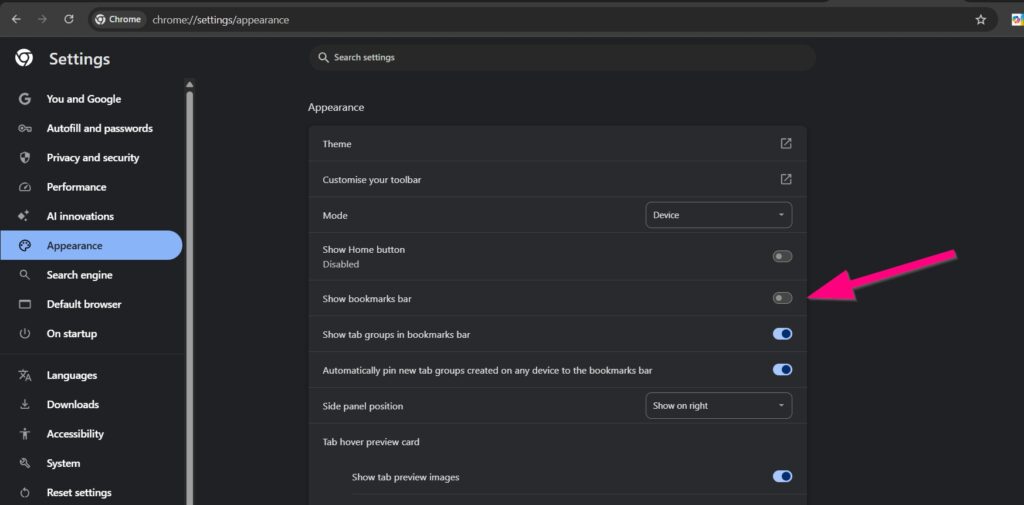The Simple Setting
You can have the best of both worlds: a clean, minimalist browsing experience without a bookmarks bar on every webpage, but with immediate access to your favorite links whenever you open a new tab. This is possible due to a built-in behavior in Google Chrome that many users don’t realize exists.
The solution is not a keyboard shortcut or a complex workaround. It’s a simple, single setting that controls the bookmarks bar’s visibility everywhere except the new tab page. By disabling the main toggle, you can achieve exactly what you want.
A Step-by-Step Guide
Achieving this is straightforward and takes less than a minute. Just follow these steps:

- Open Google Chrome and go to the settings menu. You can do this by clicking the three-dot menu in the top-right corner of the browser and selecting “Settings” or by typing
chrome://settings/in the address bar. Alternatively, the easy way, go directly to the setting using URL below:
chrome://settings/appearance - Navigate to the Appearance section. In the left-hand sidebar, click on “Appearance.”
- Find the “Show bookmarks bar” toggle. Turn this toggle to the off position. This is the key step.
That’s it! You will immediately notice that the bookmarks bar has disappeared from all open webpages. However, if you open a new tab, your bookmarks bar will be visible at the top, just as you wanted. It remains visible on the new tab page so you have quick access to your most-used sites.
Why This Works?
This method works because the “Show bookmarks bar” setting in Chrome is a global switch that controls visibility on content pages (like websites). However, the new tab page is an exception to this rule. Google has designed the browser to always display the bookmarks bar on the new tab page as a convenience, regardless of the global setting. This allows you to browse with a clutter-free interface while still being able to quickly click on a bookmark to start your session.
Based on the latest available data, here are some key statistics about Google Chrome:
- Market Share: As of late 2025, Google Chrome holds a dominant position in the global browser market, with a market share of around 64% to 69% across all devices.
- User Base: More than 3.45 billion people worldwide use Google Chrome.
- Regional Dominance: Chrome’s market share is particularly high in South America (around 79%) and Asia (around 74%), but slightly lower in North America (around 57%).
- Desktop vs. Mobile: While it leads on both platforms, Chrome’s desktop market share is about 70%, while its mobile share is slightly lower, around 69%.
- Chrome Web Store: The Chrome Web Store hosts a vast ecosystem with over 176,000 extensions and 58,000 themes available for users. However, the majority of extensions have a small user base; only a tiny fraction (about 0.24%) have over 1 million users.
- Growth: While Chrome’s user base has grown significantly since 2018 (by over 44%), its growth rate has slowed in recent years.
✍️ Need Content Like This?
We craft high-quality, SEO-optimized articles tailored for blogs, news sites, and educational platforms. If you enjoy thoughtful writing and open-source spirit, just buy me a coffee and I’ll write 1,000 words for you. Let’s build something meaningful together. Contact us to get started.

